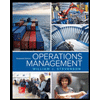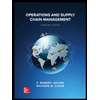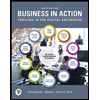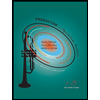Amy Lloyd is interested in leasing a new car and has contacted three automobile dealers for pricing information. Each dealer offered Amy a closed-end 36 month lease with no down payment due at the time of signing. Ea lease includes a monthly charge and a mileage allowance. Additional miles receive a surcharge on a per-mile basis. The monthly lease cost, the mileage allowance, and the cost for additional miles follow: Honthly Cost Mileage Allowance Additional Mile Dealer Cost per Dealer A $309 36.000 $0.15 Dealer B $320 45,000 $0.20 Dealer C $335 54,000 $0.15 Amy decided to choose the lease option that will minimize her total 36-month cost. The difficulty is that Amy is not sure how many miles she will drive over the next three years. For purposes of this decision she believes i is reasonable to assume that she will drive 12,000 miles per year, 15.000 miles per year, or 18,000 miles per year. With this assumption Amy estimated her total costs for the three lease options. For example, she figures that the Dealer A lease will cost her $11,124 if he drives 12,000 miles per year, $12,474 if he drives 15,000 miles per year, or $13,824 if he drives 18,000 miles per year. (a) What is the decision, and what is the chance event? The decision is to choose the best lease option There are ? v alternatives. The chance event is -Seledt- There are ? v possible outcomes. (b) Construct a payoff table. (Enter your answers in $). Annual Miles Driven Dealer 12,000 15,000 18,000 Dealer A $11,124 $12,474 $13,824 Dealer B$ Dealer C (c) If Amy has no idea which of the three mileage assumptions is most appropriate, what is the recommended decision (leasing option) using the optimistic, conservative, and minimax regret apPproaches? The recommended decision using the optimistic approach is -Select- approach is -Seled- ). - The recommended decision using the minimax regret The recommended decision using the conservative approach is -Select-- (d) Suppose that the probabilities that Amy drives 12,000, 15,000, and 18,000 miles per year are 0.5, 0.4, and 0.1, respectively. What option should Amy choose using the expected value approach? EV(Dealer A) = $ EV(Dealer B)- S EVCDealer S
Amy Lloyd is interested in leasing a new car and has contacted three automobile dealers for pricing information. Each dealer offered Amy a closed-end 36 month lease with no down payment due at the time of signing. Ea lease includes a monthly charge and a mileage allowance. Additional miles receive a surcharge on a per-mile basis. The monthly lease cost, the mileage allowance, and the cost for additional miles follow: Honthly Cost Mileage Allowance Additional Mile Dealer Cost per Dealer A $309 36.000 $0.15 Dealer B $320 45,000 $0.20 Dealer C $335 54,000 $0.15 Amy decided to choose the lease option that will minimize her total 36-month cost. The difficulty is that Amy is not sure how many miles she will drive over the next three years. For purposes of this decision she believes i is reasonable to assume that she will drive 12,000 miles per year, 15.000 miles per year, or 18,000 miles per year. With this assumption Amy estimated her total costs for the three lease options. For example, she figures that the Dealer A lease will cost her $11,124 if he drives 12,000 miles per year, $12,474 if he drives 15,000 miles per year, or $13,824 if he drives 18,000 miles per year. (a) What is the decision, and what is the chance event? The decision is to choose the best lease option There are ? v alternatives. The chance event is -Seledt- There are ? v possible outcomes. (b) Construct a payoff table. (Enter your answers in $). Annual Miles Driven Dealer 12,000 15,000 18,000 Dealer A $11,124 $12,474 $13,824 Dealer B$ Dealer C (c) If Amy has no idea which of the three mileage assumptions is most appropriate, what is the recommended decision (leasing option) using the optimistic, conservative, and minimax regret apPproaches? The recommended decision using the optimistic approach is -Select- approach is -Seled- ). - The recommended decision using the minimax regret The recommended decision using the conservative approach is -Select-- (d) Suppose that the probabilities that Amy drives 12,000, 15,000, and 18,000 miles per year are 0.5, 0.4, and 0.1, respectively. What option should Amy choose using the expected value approach? EV(Dealer A) = $ EV(Dealer B)- S EVCDealer S
Practical Management Science
6th Edition
ISBN:9781337406659
Author:WINSTON, Wayne L.
Publisher:WINSTON, Wayne L.
Chapter2: Introduction To Spreadsheet Modeling
Section: Chapter Questions
Problem 20P: Julie James is opening a lemonade stand. She believes the fixed cost per week of running the stand...
Related questions
Question
![(d) Suppose that the probabilities that Amy drives 12,000, 15,000, and 18,000 miles per year are 0.5, 0.4, and 0.1, respectively. What option should Amy choose using the expected value approach?
EV(Dealer A) - $
EV(Dealer B) = $
EV(Dealer C) = $
The best decision is -Select--
(e) Develop a risk profile for the decision selected in part (d). What is the most likely cost, and what is its probability? (Submit a file with a maximum size of 1 MB.)
Browse.] No file selected.
(f) Suppose that after further consideration Amy concludes that the probabilities that she will drive 12,000, 15,00o0, and 18,000 miles per year are 0.3, 0.4, and 0.3, respectively. What decision should Amy make using the
expected value approach?
EV(Dealer A) = $
EV(Dealer B) = $
EV(Dealer C) = $
The best decision is --Select--](/v2/_next/image?url=https%3A%2F%2Fcontent.bartleby.com%2Fqna-images%2Fquestion%2Fd8c08e52-7f44-486c-a035-62637e0c1676%2F848e9b89-5db1-4470-9fe7-0b1f18ef4295%2F81c8ihu_processed.jpeg&w=3840&q=75)
Transcribed Image Text:(d) Suppose that the probabilities that Amy drives 12,000, 15,000, and 18,000 miles per year are 0.5, 0.4, and 0.1, respectively. What option should Amy choose using the expected value approach?
EV(Dealer A) - $
EV(Dealer B) = $
EV(Dealer C) = $
The best decision is -Select--
(e) Develop a risk profile for the decision selected in part (d). What is the most likely cost, and what is its probability? (Submit a file with a maximum size of 1 MB.)
Browse.] No file selected.
(f) Suppose that after further consideration Amy concludes that the probabilities that she will drive 12,000, 15,00o0, and 18,000 miles per year are 0.3, 0.4, and 0.3, respectively. What decision should Amy make using the
expected value approach?
EV(Dealer A) = $
EV(Dealer B) = $
EV(Dealer C) = $
The best decision is --Select--

Transcribed Image Text:Amy Lloyd is interested in leasing a new car and has contacted three automobile dealers for pricing information. Each dealer offered Amy a closed-end 36 month lease with no down payment due at the time of signing. Each
lease includes a monthly charge and a mileage allowance. Additional miles receive a surcharge on a per-mile basis. The monthly lease cost, the mileage allowance, and the cost for additional miles follow:
Monthly
Cost
Mileage
Allowance
Cost per
Additional Mile
Dealer
Dealer A
$309
36,000
$0.15
Dealer B
$320
45,000
$0.20
Dealer C
$335
54,000
$0.15
Amy decided to choose the lease option that will minimize her total 36-month cost. The difficulty is that Amy is not sure how many miles she will drive over the next three years. For purposes of this decision she believes it
is reasonable to assume that she will drive 12,000 miles per year, 15,000 miles per year, or 18,000 miles per year. With this assumption Amy estimated her total costs for the three lease options. For example, she figures
that the Dealer A lease will cost her $11,124 if he drives 12,000 miles per year, $12,474 if he drives 15,000 miles per year, or $13,824 if he drives 18,000 miles per year.
(a) What is the decision, and what is the chance event?
The decision is to choose the best lease option
There are ? v alternatives. The chance event is -Select--
There are ? v possible outcomes.
(b) Construct a payoff table. (Enter your answers in $).
Annual Miles Driven
Dealer
12,000
15,000
18,000
Dealer A
$11,124
$12,474
$13,824
Dealer B
$1
Dealer C
$4
24
$
(c) If Amy has no idea which of the three mileage assumptions is most appropriate, what is the recommended decision (leasing option) using the optimistic, conservative, and minimax regret approaches?
The recommended decision using the optimistic approach is -Select--
approach is -Select-
v). The recommended decision using the conservative approach is -Select-
The recommended decision using the minimax regret
(d) Suppose that the probabilities that Amy drives 12,000, 15,000, and 18,000 miles per year are 0.5, 0.4, and 0.1, respectively. What option should Amy choose using the expected value approach?
EV(Dealer A) = $
EV(Dealer B) = $
EVIDealer C = t|
Expert Solution
Step 1
Given-
Trending now
This is a popular solution!
Step by step
Solved in 2 steps with 3 images

Recommended textbooks for you

Practical Management Science
Operations Management
ISBN:
9781337406659
Author:
WINSTON, Wayne L.
Publisher:
Cengage,

Operations Management
Operations Management
ISBN:
9781259667473
Author:
William J Stevenson
Publisher:
McGraw-Hill Education

Operations and Supply Chain Management (Mcgraw-hi…
Operations Management
ISBN:
9781259666100
Author:
F. Robert Jacobs, Richard B Chase
Publisher:
McGraw-Hill Education

Practical Management Science
Operations Management
ISBN:
9781337406659
Author:
WINSTON, Wayne L.
Publisher:
Cengage,

Operations Management
Operations Management
ISBN:
9781259667473
Author:
William J Stevenson
Publisher:
McGraw-Hill Education

Operations and Supply Chain Management (Mcgraw-hi…
Operations Management
ISBN:
9781259666100
Author:
F. Robert Jacobs, Richard B Chase
Publisher:
McGraw-Hill Education


Purchasing and Supply Chain Management
Operations Management
ISBN:
9781285869681
Author:
Robert M. Monczka, Robert B. Handfield, Larry C. Giunipero, James L. Patterson
Publisher:
Cengage Learning

Production and Operations Analysis, Seventh Editi…
Operations Management
ISBN:
9781478623069
Author:
Steven Nahmias, Tava Lennon Olsen
Publisher:
Waveland Press, Inc.